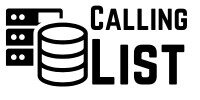At its core, customer segmentation is the process of dividing your entire customer base into smaller, more manageable groups based on shared characteristics. Imagine your customer base as a sprawling forest. Instead of trying to nurture every tree identically, segmentation allows you to identify different species of trees, understand their specific sunlight, water country email list and soil requirements, and then tailor your care accordingly.
What is Customer Segmentation Beyond the Basic Definition
These segments are not arbitrary; they are meticulously crafted based on data-driven insights. The goal is to identify groups of customers who are likely to respond similarly to specific marketing efforts, product offerings, or customer service approaches.
Why is Customer Segmentation Crucial for Your Business? The Undeniable Benefits
The impact of effective customer segmentation reverberates throughout every aspect of your business, leading to a cascade of tangible benefits:
y products. This dramatically increases open rates, click-through rates, and ultimately, conversionsImproved Product Development and unlock the german business market Innovation: Understanding the specific needs and desires of different segments provides invaluable insights for product development. If one segment consistently requests a particular Optimized Pricing Strategies: Different customer segments often have varying price sensitivities. Segmentation enables you to implement dynamic pricing strategies, offering premium options to those willing to pay more and more budget-friendly alternatives to price-conscious segments, maximizing overall revenue
Stronger Customer Relationships and Loyalty: Personalization fosters a sense of being understood and valued. When customers feel that a business genuinely caters to their individual needs, it builds trust and strengthens loyalty, leading to repeat purchases and positive word-of-mouth.
- More Efficient Resource Allocation: By focusing your marketing spend, product development efforts, and customer service resources on the segments that offer the highest return on investment, you eliminate waste and maximize efficiency.
- Competitive Advantage: Businesses that effectively segment their customers gain a significant edge over competitors who rely on a generic approach. They can respond more quickly to market shifts, identify niche opportunities, and consistently deliver superior customer experiences.
The Four Pillars of Customer Segmentation: How to Divide Your Audience
While the specific methods and data points can vary, customer segmentation generally falls into four primary categories:
bly the most powerful form of segmentation, as it categorizes customers based on their actual behaviors and interactions with your brand
The Process of Effective Customer Segmentation: A Step-by-Step Guide
Implementing successful customer segmentation isn’t a one-off task; it’s an ongoing process that involves:
- Define Your Objectives: What do you hope to achieve with segmentation? Increased sales, improved customer retention, better product development? Clear objectives will guide your n terms of needs and responses.
- or is dynamic. Regularly review and refine your segments and strategies based on new data and changing market conditions. This might involve merging segments, creating new ones, or adjusting your targeting.
Tools and Technologies for Customer Segmentation
While the principles remain the same, the tools china business directory available to facilitate customer segmentation have evolved dramatically:
- Customer Relationship Management (CRM) Systems: Essential for storing and managing customer data, providing a centralized view of interactions.
- Marketing Automation Platforms: Enable personalized communication and campaign execution based on segment attributes.
- Website Analytics Tools: Provide insights into user behavior on your website.
Beyond the Basics: Advanced Segmentation Considerations
- RFM (Recency, Frequency, Monetary) Analysis: A powerful behavioral segmentation technique that categorizes customers based on how recently they purchased, how frequently they purchase, and how much money they spend.
Identifying high-value customers who are likely to generate significant revenue over their lifetime with your business.
- AI and Machine Learning: Increasingly used for advanced segmentation, allowing for predictive modeling of customer behavior and identification of complex patterns that might be missed by manual analysis.
Conclusion: Your Pathway to Sustainable Growth
Customer segmentation is no longer an option but a necessity for any business serious about sustainable growth. By understanding your customers on a deeper, more granular level, you can move beyond generic marketing and create highly targeted, relevant, and impactful experiences. This not only drives immediate sales but also fosters long-term customer loyalty and builds a stronger, more resilient business. Embrace the power of segmentation, and unlock the true potential of your customer base.
